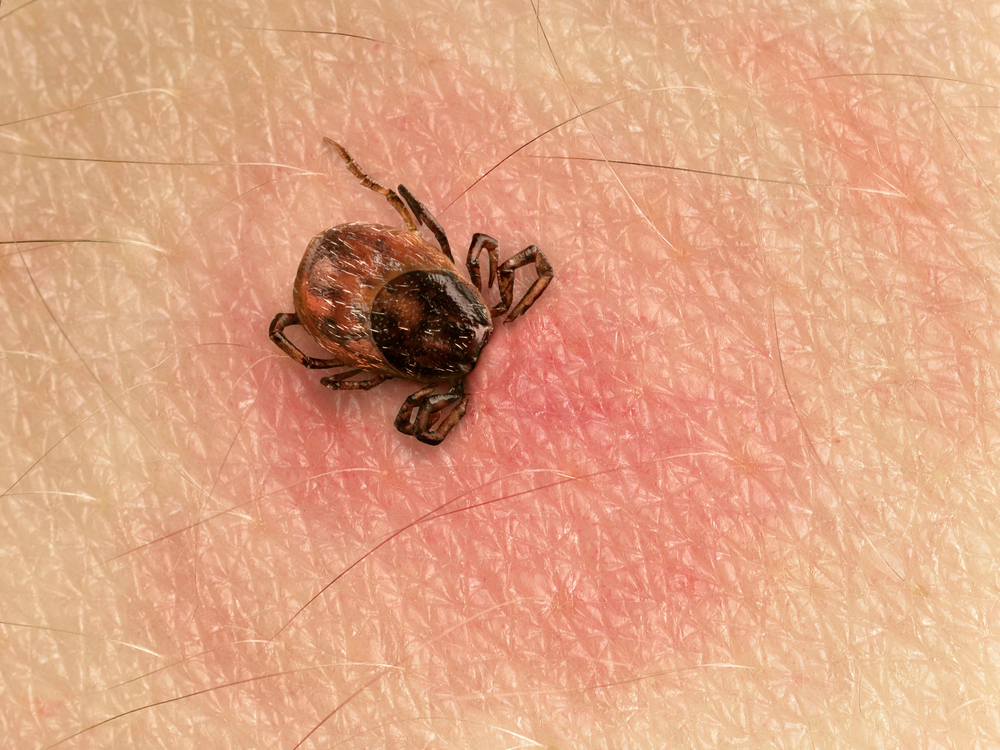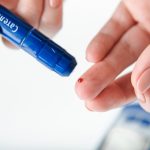Lyme disease is an illness that is caused by the borrelia bacteria. The most common ways that humans come in contact with this bacteria is from tick bites from ticks that are carrying the bacteria. Ticks like to live in grassy, bushy, or wooded areas. The most common places in the United States for ticks are the upper Midwest as well as the Northeast. Ticks are everywhere, you can get a tick bite from being anywhere outdoors. The types of ticks that carry the borrelia bacteria are the black-legged deer tick, and the western black-legged tick. Tick season is considered to be between April and October.
Lyme disease is not contagious; you cannot pass it to someone from kissing, or touching. If you are pregnant it is possible for you to pass the infection to your unborn baby. You raise your risk of getting Lyme disease by spending lots of time outside, or having pets that can bring ticks into your home. Boys that are 15 years old, and men between the ages of 40-60 are more likely to get Lyme disease than others. The reason for this is unknown.
Stages
Lyme disease shows up in stages. Sometimes the early stages show no symptoms at all which can make it hard to detect this illness. Usually the first thing you notice is a tick bite. A tick bite will look like a tiny, itchy spot, similar to a mosquito bite. Lyme disease is broken up into three different stages.
Stage one occurs 3-30 days after the tick bite. This stage is called early localized Lyme. Sometimes symptoms don’t start this early. A very common symptom is a rash that looks like a bullseye around the tick bite, but this rash is not always present. Other symptoms that can occur during stage one are fever, headache, extreme tiredness, joint stiffness, muscle aches and pains, or swollen lymph nodes.
Stage two occurs 3-10 weeks after the tick bite. Stage two the Lyme disease becomes more serious and widespread throughout the body. Lyme disease worsens when left untreated. Stage two is called early disseminated Lyme. Along with all the symptoms of stage one you may also experience rashes on other parts of the body, irregular heartbeats, pain spreading from the back to the hips to the legs, pain, numbness, or weakness in the hands or feet, painful swelling of the eyes or eyelids, and pain or vision loss.
Stage three is called late disseminated disease. This occurs 2-12 months after the tick bite. It can lead to arthritis in the large joints. It can also cause a condition that is called acrodermatitis chronica atrophicans. This is a condition that causes the skin of the back of the hands and the skin on the tops of the feet to become discolored. During stage 3 you may also experience all the symptoms from stage one and two.
Diagnosis
You can be diagnosed with Lyme disease based on your symptoms and if you have been exposed to any tick bites. Your doctor can also do a blood test. Sometimes if it is too early after the tick bite the blood test may not show a positive report. This is because it takes some time for the antibodies to build up in your blood. There is a Lyme disease test that your doctor can do using only one sample of your blood for two different tests. If the first test is done and comes back negative the second test will not be run and you do not have Lyme disease. If the first test comes back either positive, or indeterminate, then the second test will be run. Two positive tests diagnoses you with Lyme disease.
Complications
Leaving Lyme disease left untreated can cause symptoms to worsen and complications to arise. Complications of Lyme disease are joint disease, neurological disease, heart inflammation, and frequent hospitalizations. Ten percent of people who are treated for Lyme disease won’t get rid of the disease completely. The three long lasting effects of Lyme disease are joint or muscle pain, fatigue, and short term memory loss or confusion. This is called post-treatment Lyme disease syndrome.
Treatment
If caught in the early stages treatment will consist of antibiotics for 2-3 weeks. Most common antibiotics that are used are amoxicillin, cefuroxime, or doxycycline. If the first round of antibiotics does not get rid of the Lyme disease your doctor will either put you on another round of oral antibiotics or give you a shot. If the Lyme disease has progressed to further stages other treatments may be needed for conditions such as arthritis, meningitis, brain swelling, or spinal cord swelling. With treatment you usually start feeling much better very quickly.
Prevention
The best way to avoid Lyme disease is to avoid getting tick bites. Ticks are very small so taking precautions when you will be in areas that have ticks can be essential for preventing Lyme disease. Getting bitten by a tick does not mean you will get Lyme disease. Not all ticks are infected with the bacteria. To avoid tick bites you can use a tick repellant, on your body or on your gear when outside. Avoid open toed shoes, wear long sleeves, wear long pants, and light colored clothing. After coming inside make sure you shower within 2 hours. Check for ticks on your body and on your clothing. You can put clothing and gear into the dryer on hot for 10 minutes to kill any ticks. Check your pets daily for ticks.
READ MORE: Summer Outdoor Exercise: Heat Illnesses
Sources:
https://www.cdc.gov/lyme/index.html#:~:text=Lyme%20disease%20is%20the%20most,bite%20of%20infected%20blacklegged%20ticks
https://www.mayoclinic.org/diseases-conditions/lyme-disease/symptoms-causes/syc-20374651
https://www.webmd.com/rheumatoid-arthritis/arthritis-lyme-disease
https://www.hopkinsmedicine.org/health/conditions-and-diseases/lyme-disease/ticks-and-lyme-disease
https://dmvd.com/dog-conditions/the-flea-and-tick-problem/









